Hammer Time Remix: Happy Returns!
Does retail always give you the best return when it comes to cars?
The reflexive answer is ‘yes’. But the real answer is ‘It depends’.
I’ve seen cars bought at dealer auctions that don’t have a chance in a felon’s hell of reclaiming their outrageous price. This week there was a Barney inspired purple 1998 Dodge Caravan with 118k that sold for $3000. That one will have to be financed to a hardcore Prince fan with a brood. A little while back I also saw this Farley inspired van go for $5850. That one is still at the dealer’s lot begging for monetary penance. Of course, these two extreme examples are somewhere between a lightning strike and a snow flurry in Atlanta.
So what’s the norm?
If we’re looking at cash purchases for new cars, the public with rare exception pays a premium over cost.
Most new vehicles sell somewhere between a 1% to 10% premium in the retail markets. But even then the dealers often have to factor out the pigs that simply sit, and this is not always cut and dry. The popular brands will offer a few lackluster models and sometimes an errant option package or two.
The declining ones offer the most prolific of pointless plentitude and will sometimes have a net negative return in the end. In a recessionary market almost everyone has headaches and migraines. But the general public with finance companies in tow offer all the medicine needed to treat it.
Then you have the near-new vehicles. One to three year old models. Again, by Text-Enhance" href="http://www.thetruthaboutcars.com/2010/02/hammer-time-happy-returns/#">new car dealerships that benefit from strong CPO programs will come out well and the laws of demand and access are still firmly on their side.
A new car dealer has access to closed auctions where only new car dealers of that brand can pick and choose. The manufacturer will usually offer these vehicles at a lower price before offering an ‘open auction’ to the independent dealers. Online inventories are also available to virtually all by the manufacturer du jour. If a car is unique in the market place or attracts a truly affluent clientele (Subaru and Acura are two good examples), they won’t have as many repossessed offerings, fleet lease (Hertz, Avis, etc) or program cars.
Once the three year mark is past the field of choices widens considerably.
On the demand side, two diametric extremes generate the strongest price premiums from the public. The first are by Text-Enhance" href="http://www.thetruthaboutcars.com/2010/02/hammer-time-happy-returns/#">used car superstores. Carmax is a good example of this, and yes, access to financing sources for every ‘superstore’ plays a huge role in their success. Many of the larger firms will self-finance and sell their portfolio as asset backed securities (ABS) in the financial marketplace.
The same is true for the buy here – pay here dealers. However in their model the cars are more varying in quality, and the standards of practice are anywhere from saintly to satanic.
Virtually all of them will use some variation of a GPS or disabler to keep track of their vehicles. Some will work with the financially insecure in times of trouble, as does those superstores we mentioned earlier. Others will pull the rug out after one or two missed payments.
In practice, there are those who want a happy customer and referrals. Others have an army of attorneys (and repo men) to secure their real interests. Unfortunately it’s very hard to judge the BHPH dealer from their cover.
In addition you have the lower end models called ‘sleds’, the salvage vehicles, and what I term the ‘scratch and dents’. Sleds are generally vehicles that would retail for $5000 or less. Although this area also represents ‘finance fodder’ for smaller independent by Text-Enhance" href="http://www.thetruthaboutcars.com/2010/02/hammer-time-happy-returns/#">used car dealerships, many larger dealer groups are surprisingly becoming the stronger presence.
A lot of dealers are also simply not very good at the picking and choosing of used cars. Many may try to hire their own buyers or do it themselves. But more and more are resorting to experts who are simply looking for a flat fee for their services.
It’s also not a pick and flip. Most wholesalers these days will have their own mechanics, body shops, detail and recon crews, as well as their own vehicle transport. The standard practice is to sell the good ones, fix the mediocre ones, and resell the unpopular and/or crappy cars at the public and dealer auctions. The larger operations will sell hundreds on a monthly basis.
Wrecked and salvage vehicles, with rare exception, get the best returns at salvage auctions.
Insurance Auto Auctions and Copart are the two 800 pound gorillas of that industry with over 150 locations and nearly four million vehicles between the two. Yet, there are also plenty of independent salvage auctions that continue to do well due to the high fees of both groups.
When a car is worth more dead than alive a salvage auction is where the car will generally go. Sometimes it will be taken apart. Sometimes it will be rebuilt and sold locally… and sometimes they will be exported. The final option has become increasingly popular due to the declining value of the dollar.
Finally, we have what are called the ‘scratch and dents’. Generally they’re older vehicles that have susbstantial cosmetic or mechanical defects that keeps them from being retail ready. These are generally sold to the handy and the ignorant.
Public auctions are usually rife with these vehicles and it takes a strong eagle eye, along with a lot of patience, to find the right deal.
I have personally done well at public auctions due to plenty of practice… and the fact that most public buyers at these sales are generally tapped out at two grand. A lot of the cars that I finance for a premium come from this source. Certain wholesalers will also take part at these auctions. If you’re in the periphery like me, you have to pick your battles and make your friends aware of your involvement.
One other thing. County auctions are pretty much their own animals.
I’ve seen great deals with small city government sales… and the exact opposite at large county sales. The more taxi cab companies that come to the sale, the higher your Crown Vic will be. And the more rural folk that come to the sale, the higher your pickup truck will be. Buses are almost exclusively bought by exporters, transit operators, and in the case of scrap… auto recyclers.
Motorcycles and various powersports are their own specialized niche, and the impound auctions (Abandoneds, DUI’s, drug siezed, expired tags) are their own creatures as are the ones offered by title pawns and larger dealer networks.
Overall, if you’re going to do well as a buyer I would advise you to follow the advice of Wee Willie Keeler and, “Hit em’ where they ain’t.” Competition is always an expense at an auction. No matter where you buy and who you know.
More by Steven Lang
Latest Car Reviews
Read moreLatest Product Reviews
Read moreRecent Comments
- Joe65688619 Under Ghosn they went through the same short-term bottom-line thinking that GM did in the 80s/90s, and they have not recovered say, to their heyday in the 50s and 60s in terms of market share and innovation. Poor design decisions (a CVT in their front-wheel drive "4-Door Sports Car", model overlap in a poorly performing segment (they never needed the Altima AND the Maxima...what they needed was one vehicle with different drivetrain, including hybrid, to compete with the Accord/Camry, and decontenting their vehicles: My 2012 QX56 (I know, not a Nissan, but the same holds for the Armada) had power rear windows in the cargo area that could vent, a glass hatch on the back door that could be opened separate from the whole liftgate (in such a tall vehicle, kinda essential if you have it in a garage and want to load the trunk without having to open the garage door to make room for the lift gate), a nice driver's side folding armrest, and a few other quality-of-life details absent from my 2018 QX80. In a competitive market this attention to detai is can be the differentiator that sell cars. Now they are caught in the middle of the market, competing more with Hyundai and Kia and selling discounted vehicles near the same price points, but losing money on them. They invested also invested a lot in niche platforms. The Leaf was one of the first full EVs, but never really evolved. They misjudged the market - luxury EVs are selling, small budget models not so much. Variable compression engines offering little in terms of real-world power or tech, let a lot of complexity that is leading to higher failure rates. Aside from the Z and GT-R (low volume models), not much forced induction (whether your a fan or not, look at what Honda did with the CR-V and Acura RDX - same chassis, slap a turbo on it, make it nicer inside, and now you can sell it as a semi-premium brand with higher markup). That said, I do believe they retain the technical and engineering capability to do far better. About time management realized they need to make smarter investments and understand their markets better.
- Kwik_Shift_Pro4X Off-road fluff on vehicles that should not be off road needs to die.
- Kwik_Shift_Pro4X Saw this posted on social media; “Just bought a 2023 Tundra with the 14" screen. Let my son borrow it for the afternoon, he connected his phone to listen to his iTunes.The next day my insurance company raised my rates and added my son to my policy. The email said that a private company showed that my son drove the vehicle. He already had his own vehicle that he was insuring.My insurance company demanded he give all his insurance info and some private info for proof. He declined for privacy reasons and my insurance cancelled my policy.These new vehicles with their tech are on condition that we give up our privacy to enter their world. It's not worth it people.”
- TheEndlessEnigma Poor planning here, dropping a Vinfast dealer in Pensacola FL is just not going to work. I love Pensacola and that part of the Gulf Coast, but that area is by no means an EV adoption demographic.
- Keith Most of the stanced VAGS with roof racks are nuisance drivers in my area. Very likely this one's been driven hard. And that silly roof rack is extra $'s, likely at full retail lol. Reminds me of the guys back in the late 20th century would put in their ads that the installed aftermarket stereo would be a negotiated extra. Were they going to go find and reinstall that old Delco if you didn't want the Kraco/Jenson set up they hacked in?



















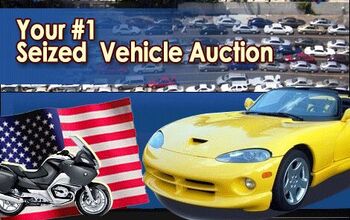
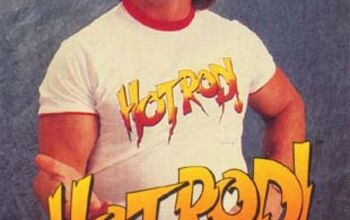
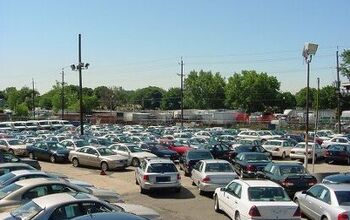
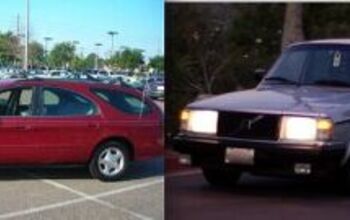
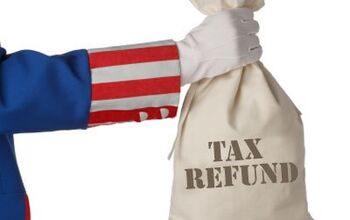










Comments
Join the conversation
English slang is usually a beautiful thing. I think what you call over there a sled is a b-omb here. In any case, I usually have a look (online) at the clearing line in Manheim. The few times I've got there to check the actual cars, sometimes I've been surprised, others I regret having opened the car (and thanks my nose doesn't pick many odors).
Sometimes colleges and universities have their own excess material auctions / impound auctions. The only one I attended was a sealed bid auction in which I didn't get any of the cars, trucks, or motorcycles which I bid on but I won a hell-ashishly ugly and large Hawaiian / Tiki style end table lamp that would have even made most of the 1970's Brady Bunch family vomit due to it's ugliness. I think that the lamp was swapped with the lamp I really wanted to win (a cool 1930s Bauhaus looking aluminum and glass desk lamp) by someone inside the auction. I would give my roommate a discount on a couch I sold to him in order for him to take the Tiki lamp too...